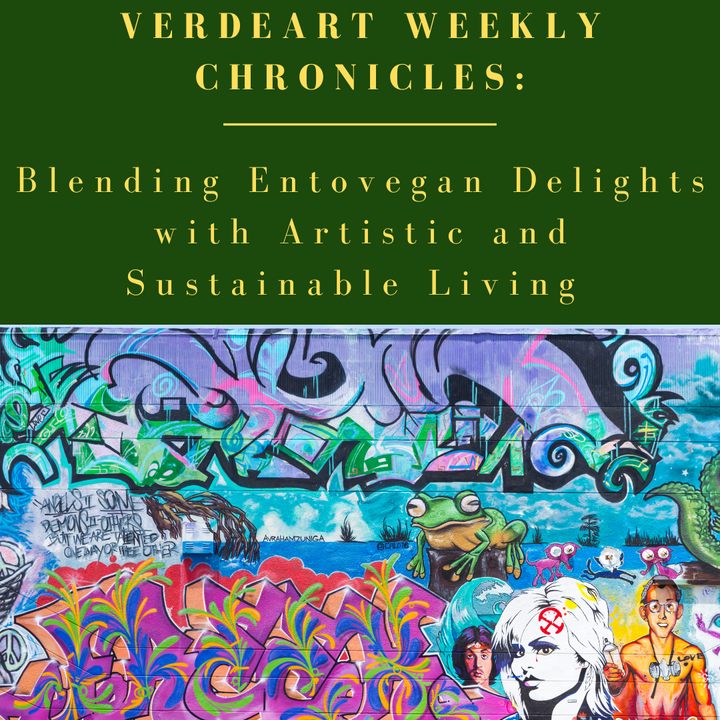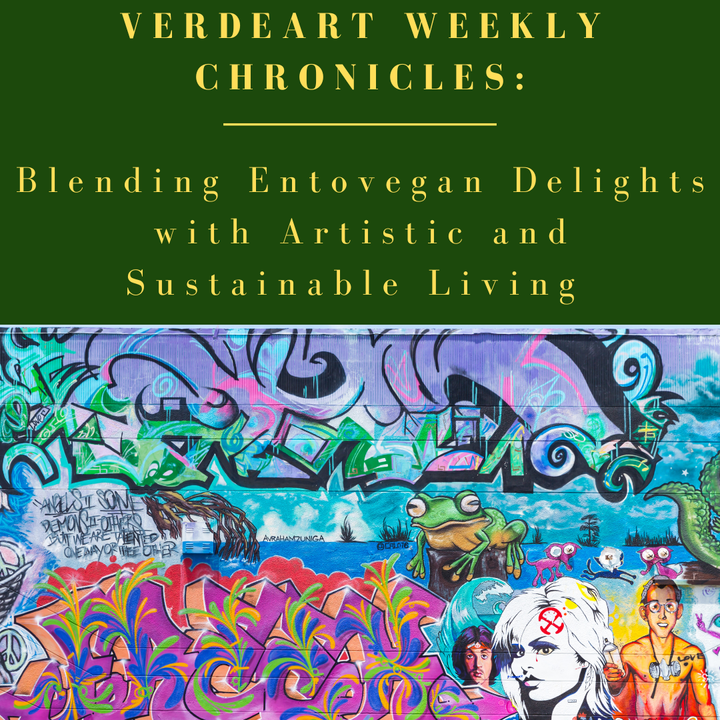VerdeArt Weekly Chronicles: Blending Entovegan Delights with Artistic and Sustainable Living - April 24, 2024
VerdeArt Weekly Chronicles: A vibrant summary through the past, present, and future of entomophagy—where culinary art meets scientific exploration and human consumption of edible insects—highlighting sustainable nutrition, eco-conscious lifestyles, environmental principles, and the impact of eco-art
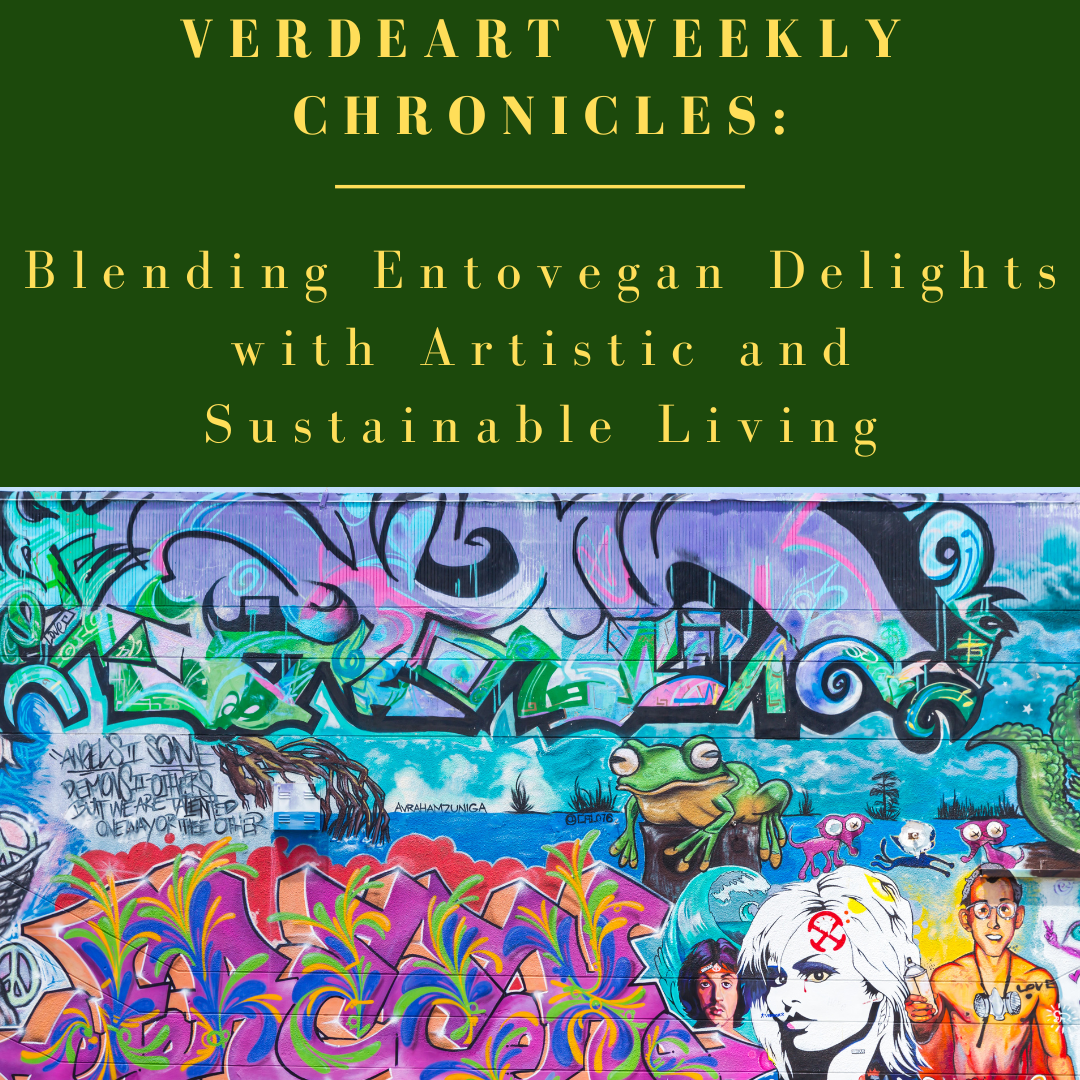
The Cricket Conundrum: A Tale of Taste and Tenacity
As someone who has embraced the world of entomophagy—the practice of consuming arthropods, particularly insects and crustaceans, as food—I've encountered my fair share of challenges and misconceptions. However, one hurdle that consistently stands out is the struggle for consistency in the taste and quality of these edible species, especially crickets.
Let me take you on a journey, one that begins with a simple adage: 'You are what you eat.' In the realm of cricket farming, this phrase takes on a literal meaning that lies at the heart of our predicament. You see, the diet of these remarkable six-legged bugs directly influences their nutritional value, taste, and even the safety of the final product. Crickets are naturally rich in protein, but what if we aimed higher? By tailoring their diets, we can cultivate crickets that are not only a source of protein but also enriched with calcium for bone health, omega-3 fatty acids for cognitive and heart health, Vitamin B12 for energy and nerve function, zinc for immune support, and even fiber for digestive wellness. This approach ensures that when you choose to eat crickets, you're enjoying them not just for their protein content, but for a full spectrum of benefits—much like choosing any other food for its flavor and nutritional value.
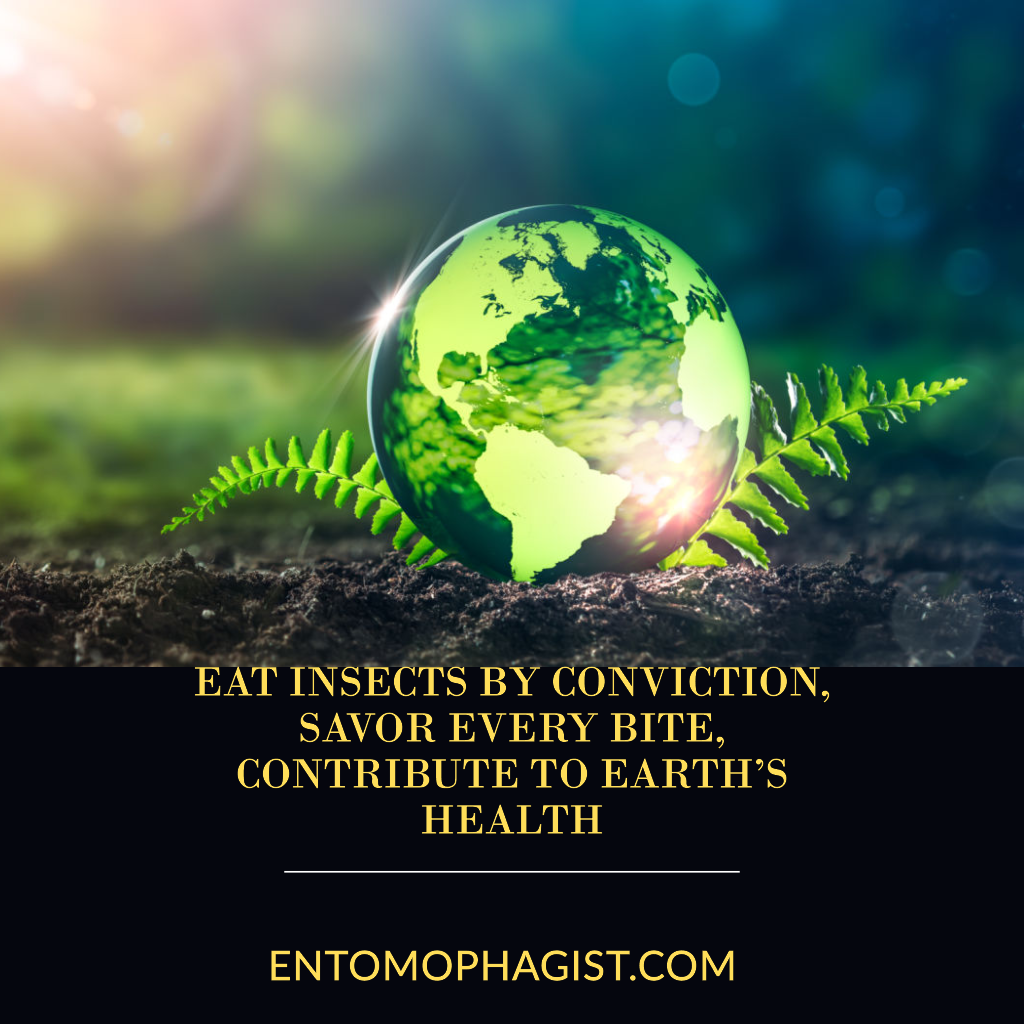
Imagine ordering cricket powder and or dried crickets from ten different suppliers. You might receive twenty unique products, each with its own flavor and texture—ten types of powder and ten types of dried crickets. This inconsistency isn't just a minor inconvenience; it poses a significant obstacle to the mainstream acceptance and integration of crickets into our daily meals.
You might be thinking, 'Aren't dried crickets and cricket powder or cricket flour essentially the same? How different can they really be?' However, the reality is more nuanced. Each batch has its unique nutritional profile and characteristics, significantly influenced by the crickets' diet and conventional livestock farming conditions. It's similar to ordering ten different wines from ten different vineyards—each one could be a delightful surprise or a disappointing letdown, depending on your taste.
To fully embrace the future of cricket cuisine, we must tackle this challenge head-on. It requires a collaborative effort from cricket farmers, suppliers, and culinary innovators like Chef Luciano to establish standardized guidelines for farming, feed quality, and processing methods. Educating consumers about the variability in cricket-based products and how to recognize high-quality flavors is essential. Experiencing different saveurs not only invites new culinary explorations but also enables us to adapt and enhance dishes that are both nutritious and eco-friendly, as well as sensorially stimulating. Chef Luciano’s prowess in transforming these unique ingredients into exquisite dishes exemplifies the potential for consistent quality and innovative taste combinations. His latest creation, the ‘Terre et Mer’ Caesar Salad, stands as a testament to this, with its exceptional interplay of land (edible crickets) and sea (anchovies) flavors.
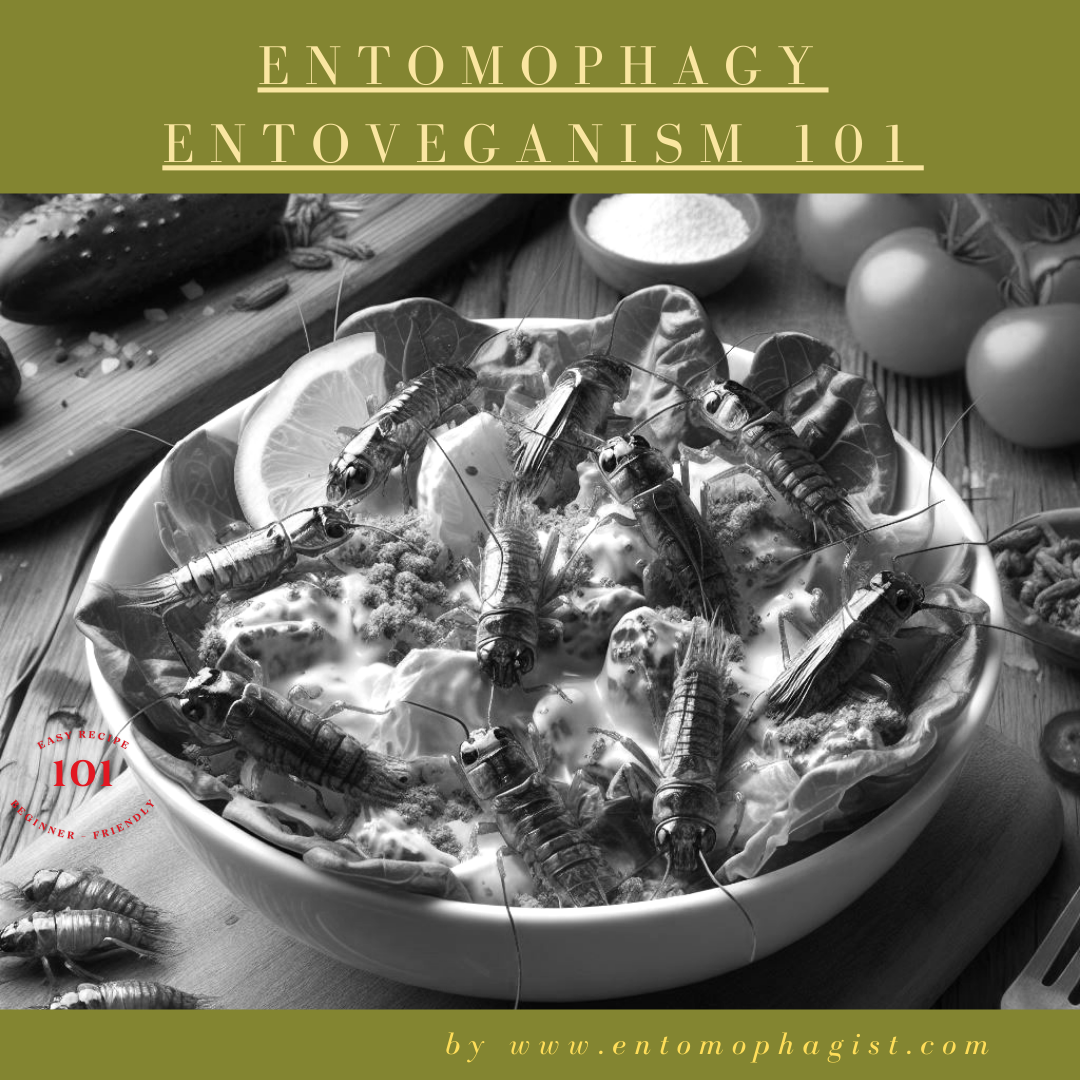
His latest creation, the ‘Entre Terre et Mer’ Caesar Salad, reflects this beautifully. Crafted in collaboration, this dish captures the essence of both land and sea, merging ethically harvested crispy-fried crickets with their nutty undertones and salted anchovies that offer a deep umami reminiscent of the ocean's bounty. Picture yourself at the shore, with a plate that not only enchants your senses but also showcases the sheer freshness and rich earthiness of what it offers. We use locally sourced, organic salad greens to lay the foundation, promoting health and environmental sustainability. This vibrant fusion creates a flavor profile so bold and nuanced, reflecting the complex ecosystems from which these ingredients hail. By integrating these distinct saveurs, we aim not only to reinvent the traditional Caesar salad but also to set a new standard for eco-friendly, clean entomophagy recipes that support our planet. Through this innovative dish, I hope to inspire others by sharing my experiences, drawing on the rich histories of edible crickets and anchovies, staples in their respective ecosystems, now key to revolutionary culinary practices. Click here to explore the full recipe and embrace the delightful complexities of this sustainable delicacy.
So, my fellow adventurous foodies and sustainability enthusiasts, let's see the cricket conundrum not as a deterrent, but as a challenge to be conquered. In the spirit of true eco-friendly dishes, we advocate for local sourcing of ingredients. For in embracing crickets as a sustainable and nutritious food source, we are not just opting for an alternative protein; we are advocating for a healthier, more sustainable world. The journey may be complex, but if you find yourself puzzled by substitutions, feel free to drop me a line. The destination—a world where crickets are as commonplace and beloved as any other food—is worth every step.
Till our next culinary adventure,

Luc Cuzco


